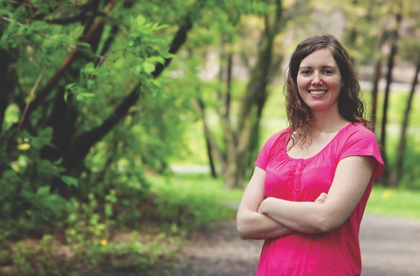
For Carleton University biology PhD student Stacey Robinson, her research — and her academic experience thus far — is all about connections. “I’m looking at the relationship between parasites and contaminants in the environment (in birds),” explains Robinson, who received a Canada Graduate Scholarship from the Natural Sciences and Engineering Research Council last May for her work, and spent two years helping organize the Ottawa-Carleton Institute for Biology symposium as co-chair.
“My research will help in understanding the circumstances favouring linkages between parasites and contaminants.”
Both stressors can influence the health of the hosts and their populations, she continues, and so far, her research has pointed to the fact male birds accumulate more parasites and have more mercury in their tissues, something potentially linked to how they feed. Determining some of the factors responsible for those differences between males and females is making up the focus of her current work, Robinson adds.
After completing her undergraduate degree in biology at Wilfrid Laurier University, Robinson came to Carleton to pursue her master’s degree in 2005, and then fast-tracked into a PhD program two years later. “I became interested in working on parasites and birds by doing my honours thesis project in my fourth year,” she explains. “It drew my interest. There’s a neat relationship between a parasite and its host.”
Already working under Canada Research Chair in Ecological Parasitology and Wildlife Health and Carleton biology professor Mark Forbes, another draw for Robinson was the opportunity to be co-supervised alongside Craig Hebert of Environment Canada’s National Wildlife Research Centre.
That link has meant the best of both worlds for Robinson’s work, balancing the academic expertise of Forbes with the practical opportunities afforded by Environment Canada, including access to government facilities, equipments and resources. Most recently, Robinson visited a site just 200 metres above Niagara Falls to conduct research, and has also travelled to Nunavut to teach a course on bird dissection.
“We had to be helicoptered in (to the falls) … it was awesome,” she laughs. “I’ve had a lot of exceptional opportunities for field work.”
With a year left in her PhD program, Robinson highlights the connections and network between Carleton’s graduate students and its biology department, as well as her co-supervisors, as one of the biggest benefits throughout her years at the school.
“Overall I’ve had a really good experience,” she adds. “I really like the close partnership with (the NWRC). It’s been a great thing.”